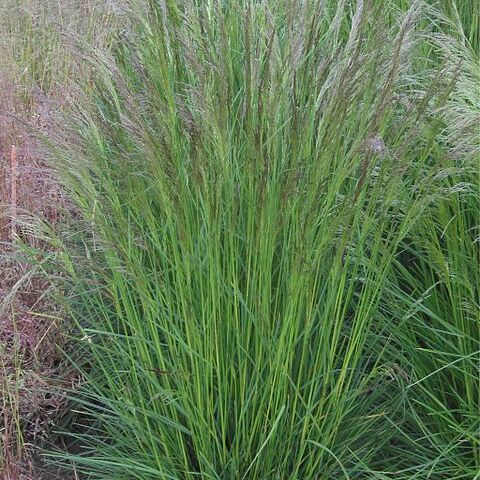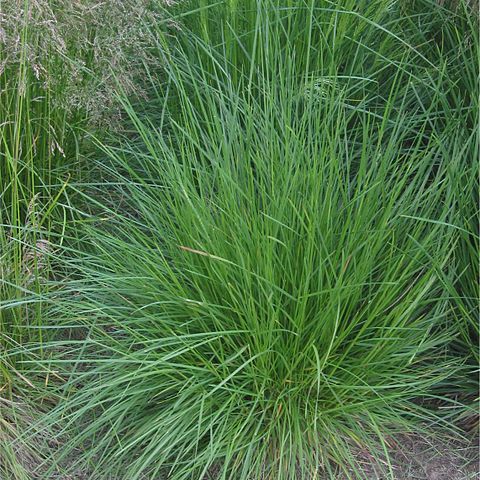Perennials, densely tufted. Leaf blades mainly basal, linear to setaceous, flat, folded or rolled; ligule membranous. Inflorescence usually an open panicle, infrequently contracted or spikelike; branches and pedicels usually filiform. Spikelets oblong to gaping, shining, laterally compressed, florets 2–3(–5), disarticulating below each floret; rachilla pilose, extended beyond uppermost floret; glumes lanceolate to oblong, subequal, ± equaling spikelet, membranous, shining, keeled, lower glume 1-veined, upper glume 1–3-veined; floret callus small, pubescent to conspicuously bearded; lemmas lanceolate to oblong, hyaline to shiny cartilaginous, back rounded, finely 4-veined (5th midvein extended into awn), glabrous, awned from near base or in lower half, apex membranous, broad, 4-toothed or denticulately truncate; awn straight or weakly geniculate, usually not exserted from spikelet; palea hyaline, subequal to lemma. Ovary glabrous. Caryopsis with solid endosperm.
Caespitose perennials or rarely annuals. Leaf-blades filiform to linear, flat, folded or rolled; ligule often elongated. Inflorescence a spreading (or rarely contracted) panicle, with small shining spikelets. Spikelets usually 2-flowered, the florets similar, hermaphrodite; rhachilla disarticulating below each floret, pilose or rarely glabrous, produced as a fine bristle; glumes subequal, mostly acute, keeled, subscarious to membranous with thin shining margins, the lower 1–3-nerved, the upper 3 (rarely 1)-nerved; lemmas lanceolate to oblong, shorter than the glumes or the upper with the tip exserted, scarious-membranous to thinly membranous, obscurely 4–5-nerved, 2-lobed, 4-toothed or lacerate-truncate at the apex, with a straight or geniculate awn from the back; callus minute, obtuse, usually bearded; palea about as long as the lemma, 2-keeled; stamens 3; stigmas 2.
Spikelets 2-fld, disarticulating above the glumes and between the lemmas; rachilla hairy, prolonged beyond the base of the upper lemma; glumes membranous, usually shining, equaling or longer than the lemmas; lemmas membranous, obtuse or often truncate and erose-toothed, rounded on the back, obscurely 5-veined, the midvein diverging at or below the middle into a short awn, the callus bearded; annuals or more often perennials with narrow lvs and conspicuous panicles of purplish to silvery or yellowish spikelets. 30+, temp. and cold regions.


